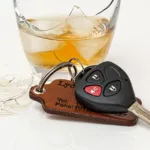Driving can be stressful and can sometimes get the best of any driver. According to a recent study, slightly more than half of all drivers will have a road rage surge in one year.
Although not all drivers in a rage hit another vehicle’s rear bumper, pull out a weapon, or throw a bottle at another vehicle, road rage is responsible for a substantial number of deaths on the road.
Road Rage Statistics
According to Gun Safety, a national organization for gun violence prevention, 2021 had an average of 42 people shot, wounded, or killed in road rage, resulting in over 500 incidents in the year.
These statistics are an uptick from statistics from previous years, with many experts blaming COVID-19-induced stress. The pandemic has caused a lot of uncertainties to many people resulting in shorter “fuses.” “A driver under stress only requires a little nudge to erupt,” says personal injury attorney David Benowitz.
Contributors and Signs of Road Rage
While a stressed person has a high chance of exhibiting road rage, they could be okay if they do not experience some form of trigger. These triggers may include busy roads, running late, inappropriate gestures, insults, racial slurs, and middle-lane hogging. A driver on a rage is highly likely to engage in aggressive driving, putting other road users at risk.
There are tell-tale signs of road rage that you need to look out for on the road. These include honking, weaving in and out of traffic, yelling, tailgating, or bumping on the rear or front cars, drawing out a weapon, throwing objects at other drivers, or exiting a vehicle in readiness for a fight.
When Faced With Road Rage
If you experience road rage directed at you, engaging in a confrontation can only worsen the problem. Instead, you need to do anything you can to get out of the situation. For example, you might want to switch to a different lane if a car tailgates you.
If they follow you there, avoid the temptation of speeding. If you do, they will probably run after you at high speed, further increasing the possibility of a severe accident. If you believe you are in real danger, call 911; the dispatcher will guide you to get to the nearest police stop or send you help.
It Could Be You on a Rage
Sometimes it is not the other driver that is on rage. It could also be you. Any accidents or injuries resulting from your rage can end up being very costly, so it is best to keep calm and try avoiding any rage triggers while driving if you know you are prone to road rage.
For example, you may need to give yourself some time allowance before getting on the road to avoid the anxiety caused by running late. You can also try to listen to music you love, which can help keep your anger checked.
A change of mindset is also important. Remember that you cannot control what the other driver does or behaves, so don’t let their actions and don’t let their behavior control your actions.








